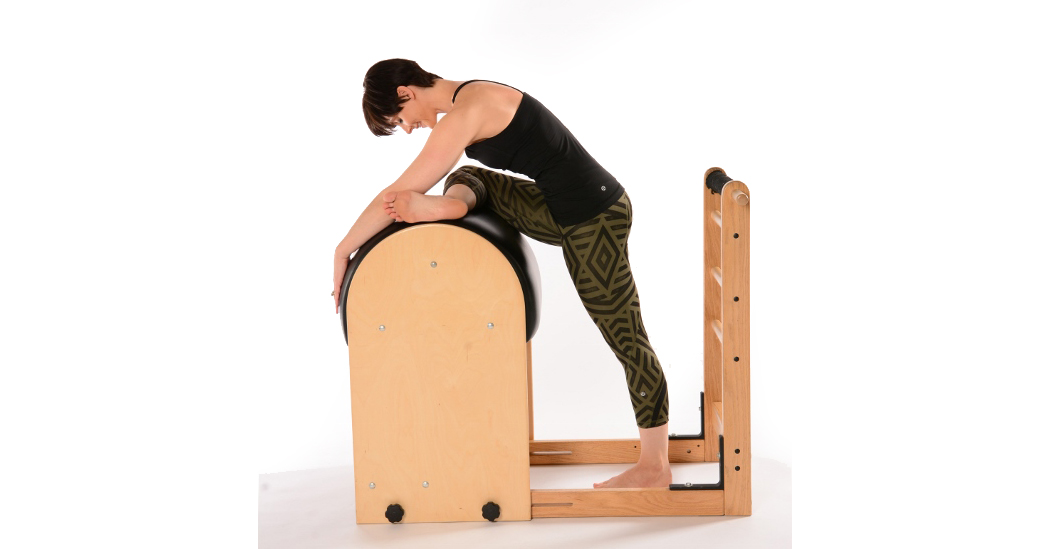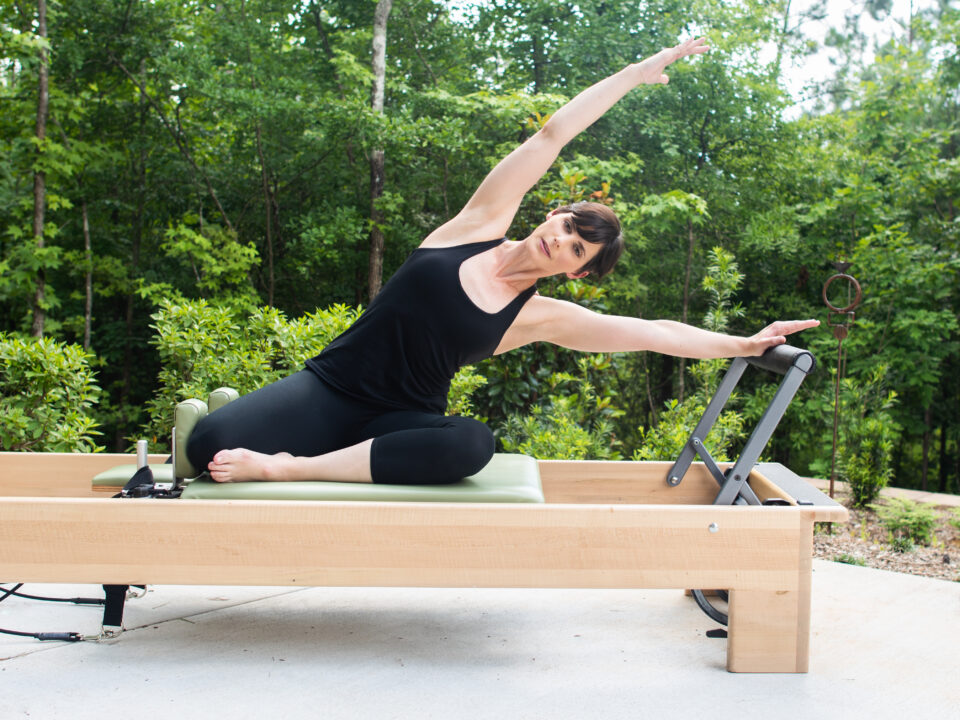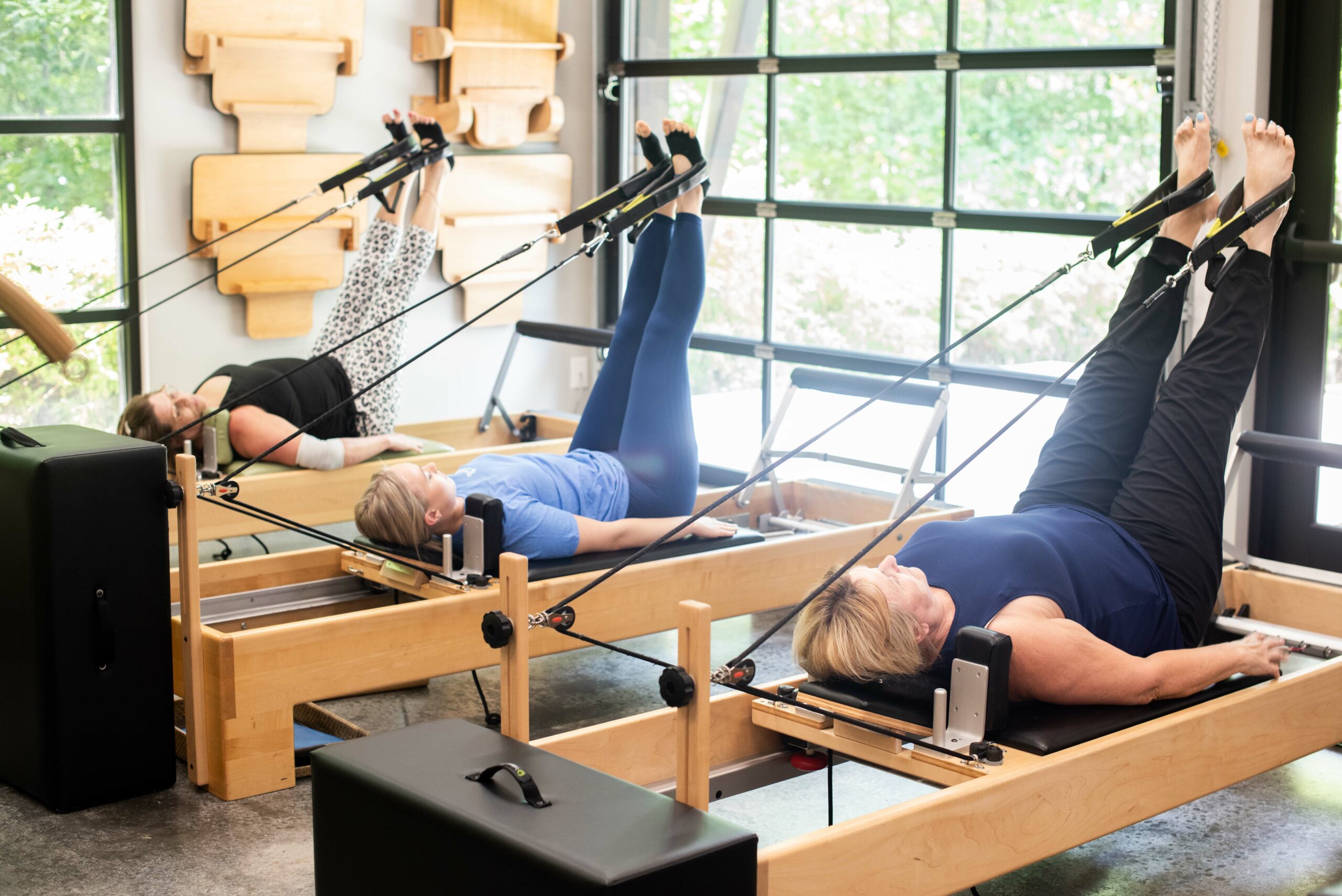- Mon - Fri
7.30 AM – 5.30 PM
Other hours upon request - 770-487-1931
Pilates Myth 3: Pilates requires flexibility

Are you feeling a little stiff and sore? Do you find simple daily movements have slowly become increasingly uncomfortable? If you think it’s too late to improve your flexibility or believe healthy mobility is a thing of the past, think again.
Pilates, a safe, low-impact exercise, is a great way to increase flexibility at any age or stage of life. Flexibility improves our quality of life and can help prevent injuries, reduce chronic pain and improve our posture.
Curious if Pilates is for you? In this article, you’ll see why you don’t need to be flexible to start Pilates, how Pilates makes you more flexible, and why Pilates helps your flexibility and overall strength.
Do I have to be flexible to do Pilates?
Pilates is accessible to everyone and anyone of all flexibility levels. Limited flexibility does not mean Pilates isn’t for you. Instead, Pilates is an enjoyable and effective exercise that can gently increase your flexibility over time.
Pilates exercises, whether on the mat, with props, or on one of the Pilates apparatus, can all be modified to suit varying degrees of flexibility and mobility. A well-trained Pilates instructor, like those at ProHealth Physical Therapy and Pilates studio, will be able to assist you in providing modifications as you increase your range of motion.
How does Pilates make you flexible?
Pilates makes you more flexible because every exercise incorporates stretching throughout the workout. In traditional weight training, flexibility training is often done after strength training and many people skip it altogether. Building strength without flexibility can lead to an imbalance in muscle building and injury.
Pilates builds strength and flexibility simultaneously. The Pilates principle of opposition helps you do this. During Pilates, fully engage your powerhouse or core muscles. By engaging the core muscles, you create stability. From here, aim to make as much length as possible throughout your body as you move. When you move your legs, imagine lengthening the legs out of the hips. Stretch your arms while keeping the powerhouse stable. Your instructor may ask you to “create space between each vertebrae.” Moving with this in mind, you’ll not only improve flexibility, but you’ll feel a few inches taller walking out of the studio.
Is Pilates for strength training or flexibility?
The Pilates Method is a low-impact exercise that offers strength training and flexibility. Pilates has hundreds of exercises that can be modified for someone at any level. Pilates is often used with physical therapy, yet is practiced by professional athletes at vigorous and challenging levels. Depending on your fitness goals, your Pilates workout can be adapted to your needs, whether gaining lean muscle mass or improving flexibility and mobility.
If you’re ready to slip on shoes without straining or stressing a muscle, try Pilates for its flexibility-improving benefits. You’ll likely feel better, walk a little taller and reduce mild joint pain. The well-trained Pilates instructors at ProHealth Physical Therapy and Pilates can help you get started wherever you are on your flexibility journey. Visit us in the Pilates studio in Peachtree City, GA or online. Book your first class today.




